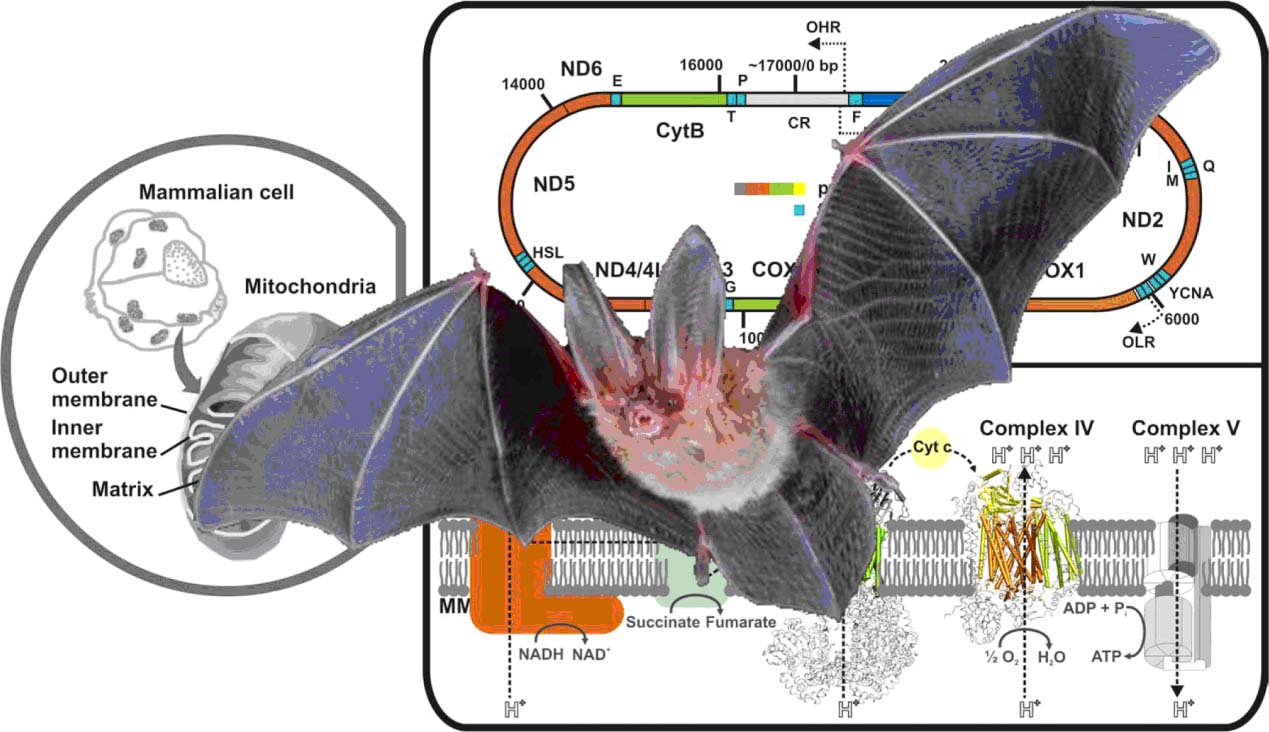Bats fly and so do birds. The adaptive changes of flight in birds are not shared with bats, and this poses intriguing questions about how the ability to fly independently developed in mammals.
Ya-ping Zhang at the Kunming Institute of Zoology, the Chinese Academy of Sciences, and his colleagues, provide evidence that the genetic changes in energy metabolism play important roles in the origin of flight in bats.
The respiratory chain system of the mitochondria produces 95% of the energy needed for locomotion. Zhang et al. observed that a higher proportion of genes engaged in the respiratory chain (13 mitochondrial genes, and about 100 nuclear-encoded OXPHOS genes), have undergone positive selection. The DNA of bats accumulated adaptive changes during their evolution in association with the high energy-demands of flight.
Shen YY, Liang L, Zhu ZH, Zhou WP, Irwin DM, Zhang YP. Adaptive evolution of energy metabolism genes and the origin of flight in bats. Proc Natl Acad Sci U S A. 2010 Apr 26. [Epub ahead of print]

Figure. Flight is the most energy-consuming locomotor mode, and Oxidative Phosphorylation (metabolic pathway) produces 95% of the adenosine triphosphate (ATP) needed for locomotion (pictures are cited from the internet).
